Barangays Population 26,547 (2010) | Founded October 2, 1571 Area 69.58 km² | |
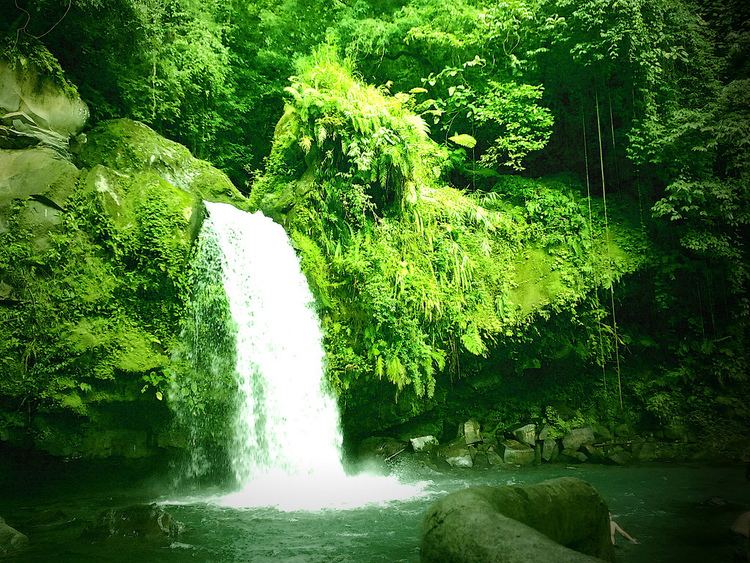 | ||
Weather 24°C, Wind E at 10 km/h, 81% Humidity | ||
Majayjay roadtrip
The Municipality of Majayjay (Filipino: Bayan ng Majayjay) is a 4th class municipality in the province of Laguna, Philippines. It is located at the foot of Mount Banahaw, and stands 1,000 feet above sea level. One hundred twenty kilometers south of Manila, it is bounded by the municipality of Magdalena on the north-west, by Lucban in Quezon province on the southeast, by Luisiana on the north-east, and by Liliw on the west. According to the 2010 census, it has a population of 26,547 people. in 4,978 households.
Contents
- Majayjay roadtrip
- Majayjay road trip
- History
- Barangays
- Local government
- Brief Description
- Climate
- Tourist attractions
- Festivities
- Economy
- Transportation
- Communication and Connectivity
- Educational Facilities
- Financial Institutions
- References
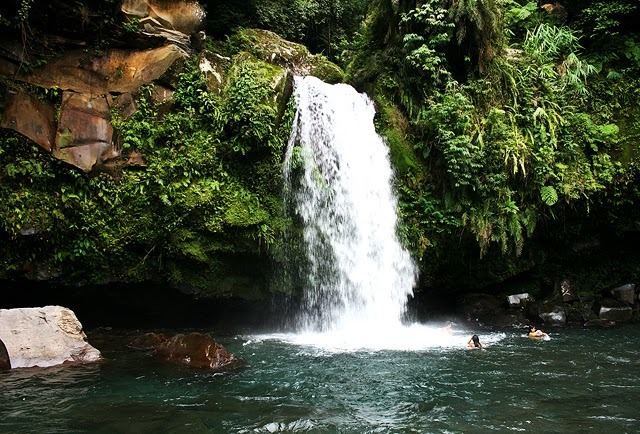
If Cavinti, Laguna has the Pagsanjan Falls, Majayjay has the Taytay Falls. Others call it the Majayjay Falls or even Imelda Falls, because ex-First Lady Imelda Marcos financed the promotion of tourism in this place. It is a two-storey high falls located in a remote scenery where the forestry is abundant. To reach Taytay Falls, one has to go down the stone steps leading to a kilometer-long trail. Constructed in 2008, during the past, reaching Taytay Falls is a very hard task, as there were no marked trails during that time. Recently, the World Bank has sponsored the promotion of tourism in Taytay Falls.
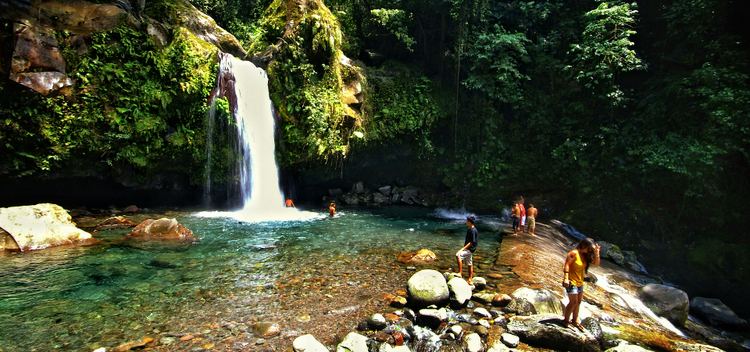
Majayjay road trip
History
Indigenous residents use to call it Malay Barangay. The Spanish colonial government made it a town in 1578.
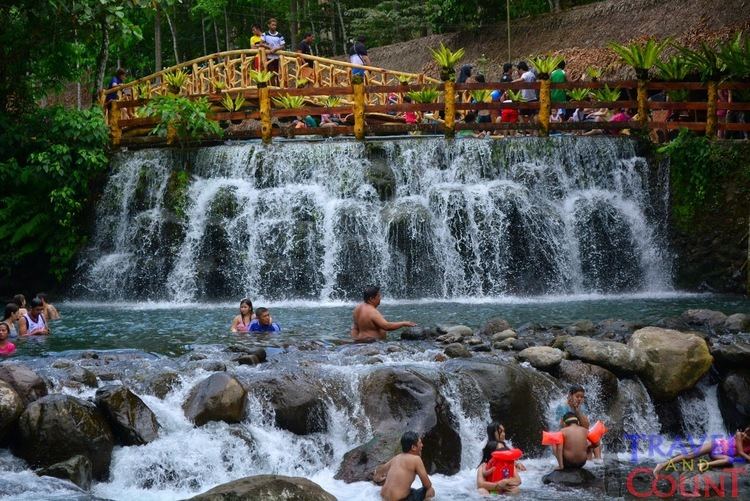
During this period, Malay Barangay was one of the most populated settlements in the newly founded province. It competed with Bay and Pagsanjan during the selection of the province’s capital.
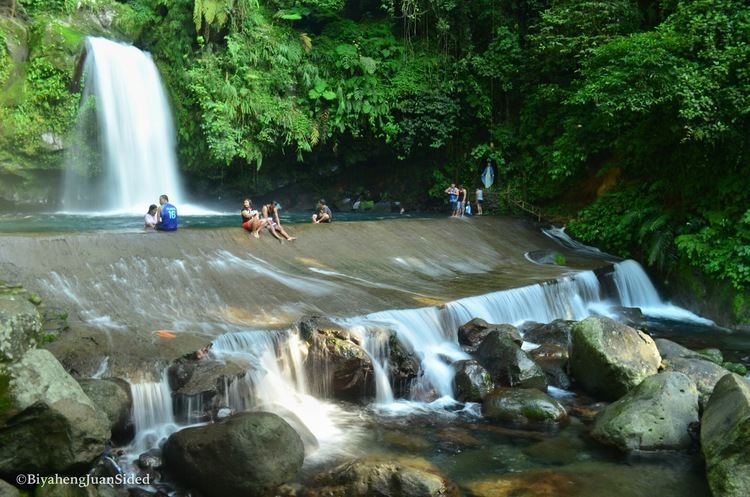
The popularity of this new town grew instantly during the Spanish period. Its location at the foot of the mountain gave it an abundant supply of fresh mountain spring water. Four rivers flowed through the town. They were Initian, Oobi and Ula, from the towering mountain, and Balanac from the falls of Botocan where all the three rivers meet.
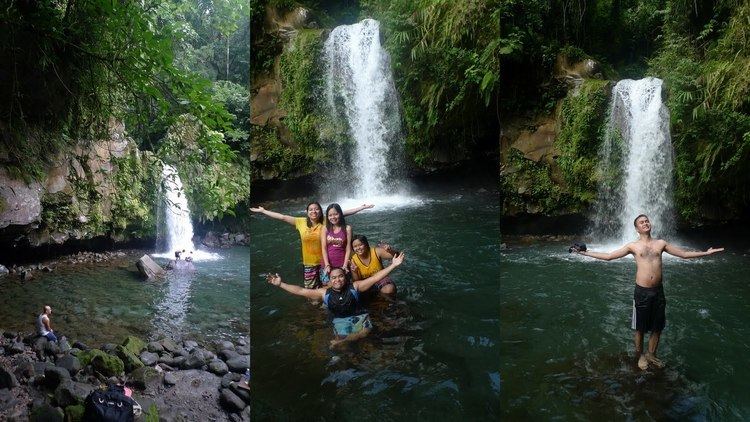
Botocan Falls and the town’s scenery were uniquely famous. Europeans and wealthy natives from Manila frequently visited the town. However, the road to Malay Barangay was tough. Guests have to be ferried from Manila through the Pasig River to Laguna de Bay. Land travel began by mounting on horses through a path in the forest, and then borne by natives in hammocks on the way up to Malay Barangay.
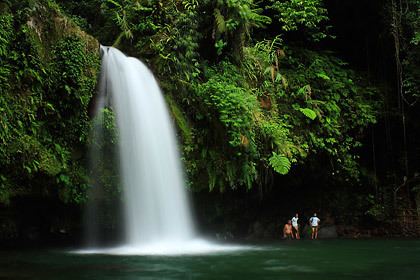
As to how Malay Barangay got its name Majayjay, residents assume that Spaniards found it difficult to pronounce Malay Barangay. Early colonizers may have shortened it to Malay-ay, until it became Majayjay. Legends, however say that it was the difficult journey to Majayjay, which gave the town its name. Tired travelers sighed, “Hay!” after scaling a cliff, “Hay!” after ascending a hill, and “Hay!” after crossing a raging river. Thus, guests referred to the place “Mahayhay,” meaning, many sighs. Spaniards spelled it “Majayjay.”
Immediately after the conversion of the natives of Malay Barangay, a makeshift church was built near May-it River. Fire destroyed it in 1578. Believers built a new church made of bamboo and cogon thatch to refurbish the former. However, fire again razed it to the ground. This time, the faithful built a stone church, but it again smoldered to ashes. The residents wondered. In spite of the repeated incidents of fire, the image of their Patron Saint, San Gregorio Papa Magno remained miraculously unscathed.
Through the efforts of Padre José de Puertollano, contributions enforced from parishioners, and forced labor of the natives, a new elegant church rose in Majayjay. It took nineteen years, incalculable donations and countless lash marks that scarred the backs of languid natives to finish the church. The church’s completion in 1730 put it in the list of the most elegant churches in the province.
Barangays
Majayjay is politically subdivided into 40 barangays.
Local government
2016 Philippine Local Election results
2013 Philippine local election results:
Councilor Valeriano Vito, Jr. assumed the position of the Vice Mayor of Majayjay. Elected Vice Mayor Lauro Mentilla dismissed from service by The Ombudsman.
Brief Description
Majayjay is geographically a landlocked area situated in the southernmost part of the province of Laguna. It nestles at the foot of the mystical Mt. Banahaw, and due to its higher altitude at some 2,700+ ft above sea level, the town makes for a good vacation destination during summer season in the Philippines. It was once branded as the Summer Capital of the Philippines 300-400 years ago during Spanish era where most of the huge names in the Spanish colonial Philippines visited this humble place. Other sights along the streets are the remnants of the said era for Spanish-inspired houses still stand at random key locations mostly in the town square. Famous and affluent families then still have their ancestral houses maintained.
Climate
Majayjay has a tropical climate. There is significant rainfall in most months of the year. The short dry season has little effect on the overall climate. This location is classified as Am by Köppen and Geiger. The temperature here averages 25.8 °C. The average annual rainfall is 2571 mm. The warmest month of the year is May, with an average temperature of 27.4 °C. January has the lowest average temperature of the year. It is 24.2 °C. The difference in precipitation between the driest month and the wettest month is 332 mm. During the year, the average temperatures vary by 3.2 °C.
Tourist attractions
Festivities
Majayjay Day is celebrated every year on October 2 as part of the celebration of the founding anniversary of the town. It brags off farm and agricultural products produced primarily from the 40 barangays composing it. This day has been given a new life and breathing in its new brand name as AniLinang Festival. The 1st AniLinang Festival was held on October 2, 2016 as an initiative of the local government to promote the town's laid-back, and peaceful way of life seen in its agricultural produce as well as in their indigenous cuisines.
SaGreMa Festival (San Gregorio Magno Majayjay), is a parochial festivity celebrated on September 3 and March 12, the dates when Saint Gregory, the town's patron saint became a pope and the day he died, respectively. In this time of the year, the Majayjayenos honor the saint for bountiful year it has been for the town.
Economy
The town boasts line of shanties of budding small enterprises mostly selling indigenous farm crops along its main road.
Transportation
Visiting the town is very accessible and convenient in all its four (4) entry points: Magdalena-Majayajay road to the north, Liliw-Majayjay road to the west, Luisiana-Majayjay road to the east, and Lucban-Majayjay road to the south. Public utility vehicles are dispersed such as the local jeepneys, and tricycles ready to fetch when you get lost. There are no buses going around the streets except for random private ones so make sure to bring your maps, and channel your people-skill for you can ask directions as townsfolk are cool and hospitable.
Communication and Connectivity
The town of Majayjay possesses different communication lines including PLDT, and cellular communications such as Globe, and Smart. Any travelers would find this place very convenient in accessing the online, digital world during their vacation trip.
Educational Facilities
Secondary schools:
- Liceo de Majayjay (High School)
- Sta Catalina National High School (Brgy. San Miguel, Main Campus and Brgy. Bakia, ext.)
- Suba National High School (Brgy. San Isidro, Main Campus and Brgy. Gagalot, ext.)
Elementary schools:
- Liceo de Majayjay (Elementary)
- Majayjay Elementary School
- Sta Catalina Elementary School
- Bakia-Botocan Elementary School
- Paaralang Elementarya ng Gagalot - Taytay
- Majayjay Center for Education and Development Foundation Inc.
- Suba Elementary School
- Montessori School
- Bucal Elementary School
- Munting Kawayan Elementary School
Financial Institutions
- Banco Laguna, Inc. (A Rural Bank since 1965, now defunct)
- Provident Bank
- Card Bank
